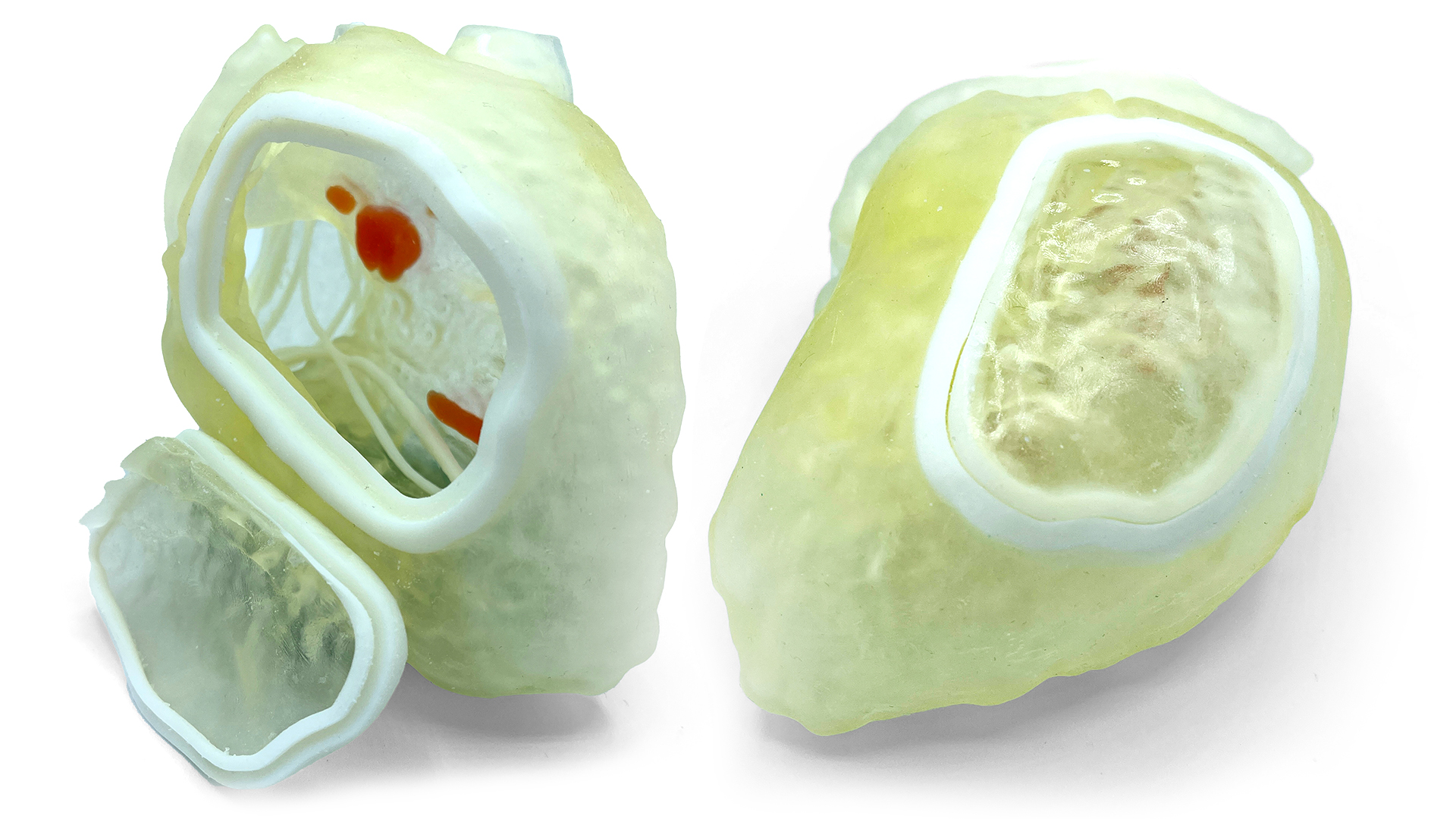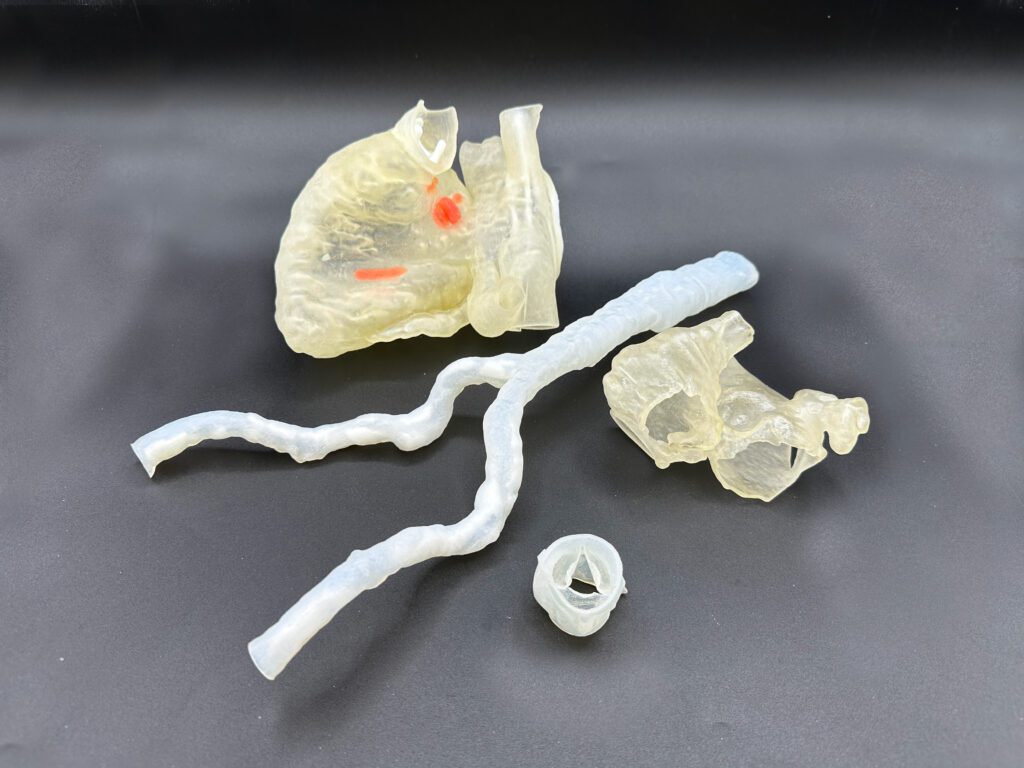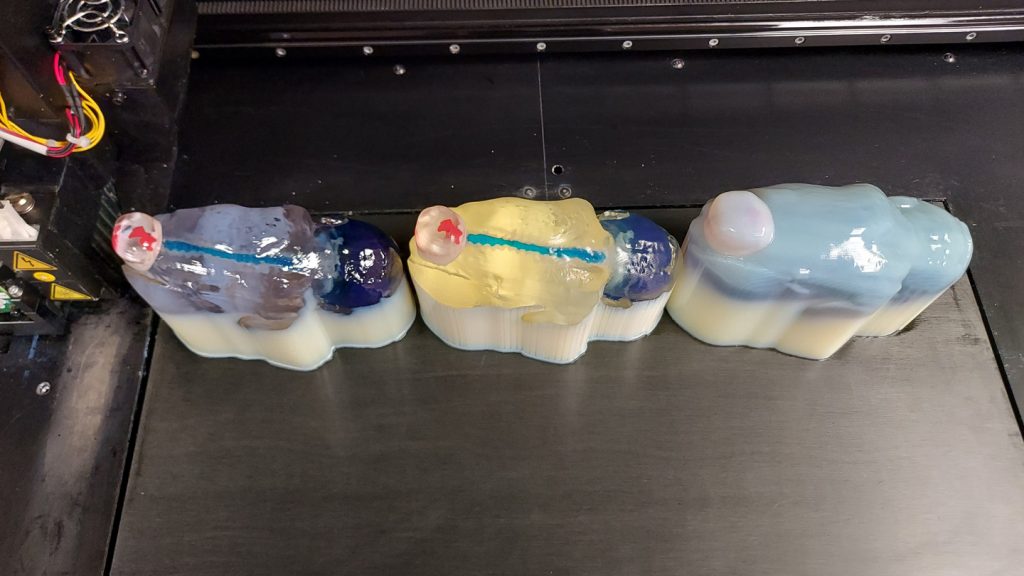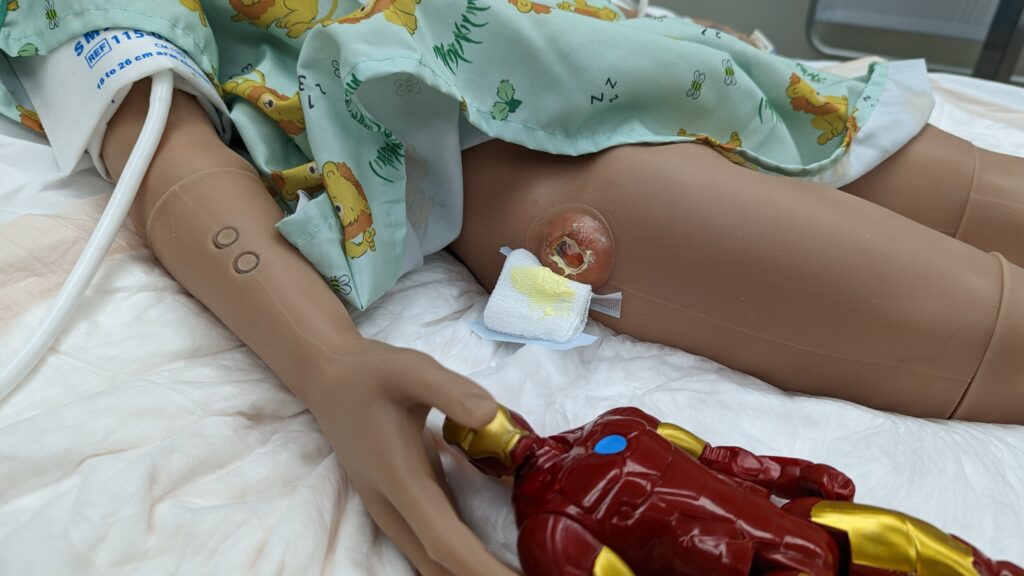Ventricular tachycardia in congenital heart
Ventricular tachycardia (VT) can be treated by ablating regions of the heart where electrical conduction is abnormal. In some instances, abnormal conduction can be the result of scar tissue associated with previous surgical procedures. An Orlando Health patient born with a ventricular septal defect (VSD), repaired within his first year of life, needed ablation to treat a VT that was hard to locate in a preliminary procedure. Orlando Health cardiologists requested the reconstruction and 3D printing of a patient-specific model to plan the ablation procedure. The cardiologists needed to create a strategy for access as well as identifying areas of scar tissue that could be generating abnormal conduction and, thus, the VT. DASH reconstructed and created a model of the patient’s heart which highlighted areas with artifacts associated with previous procedures, including the placement of the baffle to close the patient’s VSD. Orlando Health’s cardiologists used the model to devise the approach and navigate to the area of concern. Intraoperative mapping of the electrical conduction of heart walls confirmed that the area of the sealed VSD was, indeed, generating abnormal conduction and producing the patient’s tachycardia.



